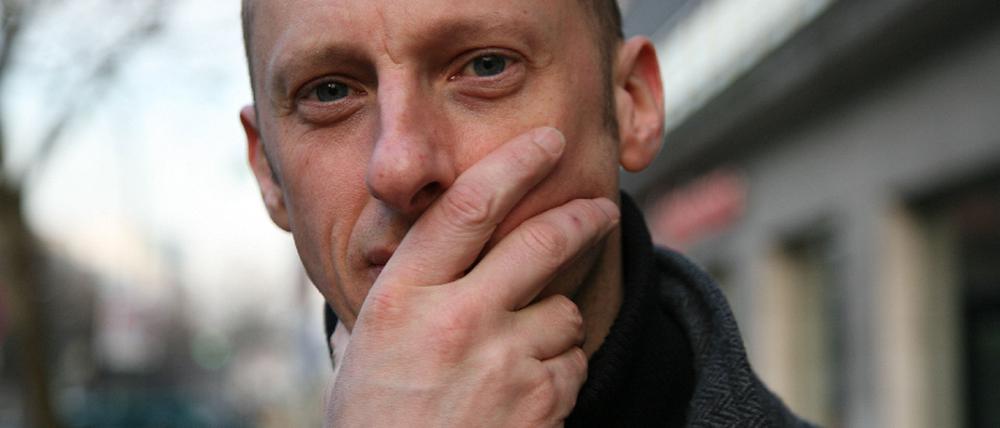
© Thilo Rückeis
Espiner's Berlin: Snow blues and Bacteriart
I have taken a good look at Berlin and discovered its microscopic beauty.
Apologies for the silence. After New Year’s near-death firework “display”, I dashed over to London for a couple of weeks to recover - and reported my cultural findings to the Guardian.
Funnily enough, London seems to copying Berlin in terms of snow. Did you see this picture of Britain last week?
Berlin’s streets are pretty slippy and treacherous - and people seem reluctant to make it safe. Grit is sprinkled scarcely. Snow, I agree, is fun... within reason. What makes it really unbearable, though, is that the whole city is sold out of sledges. And doesn’t have any hills.
Here I am, an Englishman, stereotypically talking about the weather. Enough.
On to loftier - and more controversial - matters.
In my search for hidden and secret Berlin places I had a great tip from Berlin-based artist Sabine Kacunko. She had been lent a room at the Charite hospital on Dorotheen Strasse for her latest, fascinating work.
Sabine’s photos are stark and intriguing. Black and white, beautifully lit, they allude to Karl Blossfeldt’s work and they exude her fascination with life and decay.
In a slightly anarchistic, yet typical gesture, Sabine has decided to destroy the negatives of her work, and she has done it artfully. Teaming up with expert bacteriologist Professor Krumbein, she has set bacteria on her negatives and put them under a microscope. She watches as the bugs eat up the gelatin surface of her negative image of a skull and the resulting pattern looks spookily like a brain. She was beaming the images to a gallery in Seoul but you’ll be able to see them later this year in Berlin.
She’s doing it in the right place, because this building, built in 1877, is world famous for bacteriology. It was here that Robert Koch discovered the tuberculosis bacillus responsible for TB.
The war-wounded Charite is like a time machine. You feel like you have stepped back a century as you pass through its doors. There’s the room, untouched it seems, where Koch had his library, the shelves still stacked with dusty tomes. And the fantastic lecture hall with dark wood benches and a glass roof - apparently the first to have visual aids provided by Zeiss - a kind of old-school powerpoint room.
These ancient places collide with smart, sterile rooms where microscopic research is still going on. For now.
Sadly, the Charite was forced to sell this historical building to balance its books and help pay for the restoration of the Medical Historical Museum. And guess what? It’s an English company that’s buying it.
What a shame. A shame that you had to sell such a site of heritage and history to another country. I bet you didn’t even know. And the company buying it is called Arcadia. With a name like that it sounds like a property developer - a profession that’s doing rather well in Berlin at the moment.
So what will this historic building become? A set of apartments? A nightclub?
Thankfully a little research reveals Arcadia is a charitable foundation, funded by the millionaires who owe their fortune to Tetrapak. Looking at its track record, it will no doubt ensure that the building is partly, if not wholly, preserved.
Which is more than can be said for Sabine’s negatives dying in a blaze of glory. Their microscopic beauty reminds me of looking at a snowflake for the first time: beautiful and intricate.
Talking about snowflakes, when I started writing this the sun was bursting through the clouds for the first time in sixteen days. Now it’s snowing like a blizzard. So tell me, what’s the best way to deal with snow blues in Berlin?
You can Email Mark at with your tips at mark@espiner.com and follow him at Twitter @DeutschMarkUK.
By Mark Espiner
- showPaywall:
- false
- isSubscriber:
- false
- isPaid:
- showPaywallPiano:
- false